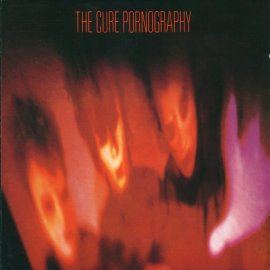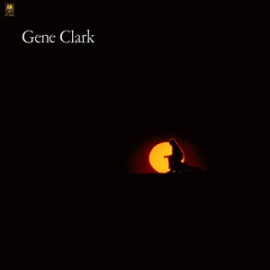Artist: The Cure
Released: May 3rd, 1982
Highlights: One Hundred Years, The Hanging Garden, Siamese Twins, Cold
Robert Smith, the constant mastermind behind The Cure’s works, stated that, during the time preceding the recording of “Pornography” – the band’s fourth album, he had two choices: either giving in to his depression or writing songs about it in order to get it out of his system. Although such declaration is quintessential to the understanding of the record, anyone completely unfamiliar with that quote could clearly tell that “Pornography” is not the product of a brain that is perfectly healthy; it is, in fact, one of the rawest musical depictions of a totally broken state of mind.
It is not that The Cure had never flirted with darkness before. “Seventeen Seconds” and “Faith”, the two albums that preface “Pornography”, were undeniably gloomy. However, with their fourth effort, the band took its down-in-the-dumps soul to uncharted depths filled with so much distress that the album feels like the reaching of a whole new sonic horizon; not due to its mood, which was far from a novelty at that point, but because of how disturbing and self-destructive the atmosphere had suddenly gotten.
It is not just that Smith, going from anger to depression, sings lines like “One more day like today and I’ll kill you” or “I close my eyes / Move slowly through drowning waves / Going away”. Despite the fact they already pack a good share of agony, most of the record’s hopelessness derives from its instrumentation. The post-punk roughness of the band is still relatively intact, but replacing simplicity are layers of atmospheric keyboards, vocals that seem to have been recorded from the bottom of a well, and a spacious mix that joins echoes and sound to produce astonishing immersion. It is so hypnotic and involving that one could easily feel locked up by the immense walls of keyboards that constantly engulf listeners like frozen gigantic waves on “Cold”.
From the coiling guitar that seems to be going down a spiral of death on “One Hundred Years”, passing through the haunting thumping bass-and-drums combo that pushes “The Figurehead” forward, and culminating with the chaotic cacophony of the title tune, “Pornography” never lets on. It is a trip via weird song structures hand-in-hand with a tormented soul that is on the verge of utter collapse. Smith ends the album by singing “I must fight this sickness / Find a cure”, and it is clear that his salvation was the writing of the record itself. As a band known for its sulky outlook, The Cure never reached grounds as disquieting as those they struck here.
![]()
Artist: Gene Clark
Released: August 1st, 1971
Highlights: The Virgin, With Tomorrow, White Light, For a Spanish Guitar
By the time “White Light” came out, Gene Clark – the most prominent and creatively active member of The Byrds – had already released three records away from the group he had abandoned a few years earlier. “White Light”, however, feels and plays like his true solo debut; not only because it marked the first time Gene penned a full album on his own, but also due to the fact the work shows the songwriting skills he had displayed in the Californian folk-rock group blossom into an unprecedented level of craft and depth.
Aware of the sheer strength of the nine-song repertoire, which included the Bob Dylan and Richard Manuel classic “Tears of Rage”, the songs are all supported by arrangements that are positively low-key. The introspective, acoustic, and subdued atmosphere the performances exhale play right into the hands of the compositions, which have their beauty highlighted by the overall lightness of the musical approach the band takes and the empathic thoughtful tone of Clark’s unmistakable voice.
Listening to Gene conjure great songs does not come as a surprise given his track record with The Byrds. The true shock that comes along with “White Light” is how the lyrics have matured. Once a man devoted to writing verses concerning attractive girls and other matters of the young heart, Clark suddenly showcases an impressive level of wisdom and thematic variance. “The Virgin” is a fleshed out narrative about someone who heads to the big city to find their way; the title song features a rich description of a small town; “One in a Hundred” is so reflective it borders on philosophical; and “For a Spanish Guitar” is an extremely poetic ode to the enigmatic power of music.
Even numbers that touch on more commonplace topics, such as relationships, hit with a newfound sense of discernment, as it is the case on “With Tomorrow”, “Because of You”, and “Where My Love Lies Asleep”. Although, as a standalone artist, Gene Clark never found the commercial success his talent deserved, the candid and pure musicianship of “White Light”, fueled by great lyrical insight and organic performances of timeless value, is still able to enchant and touch the hearts of those who decide to reach for this often forgotten fruit of the folk and country tree.
![]()
Artist: PJ Harvey
Released: May 4th, 1993
Highlights: Missed, 50ft Queenie, Dry, Me-Jane
Through the presence of Steve Albini, the producer who knows like no other how to capture the sound and rawness of a band playing live, PJ Harvey’s second record finds a way to achieve a level of brutality greater than her already gruesome debut. What were bruises, here become exposed fractures; maniac emotions reach new heights of duality, alternating passionate love and uncontrollable hatred sometimes in the same song; and wild urges become accentuated due to the fact Polly Jean needs wail considerably louder so that her voice, buried in the mix of instruments, breaks through the wall.
As it kicks off the album, the title track makes it blatant that “Rid of Me” is a work of polar extremes. Its quiet moments are soft whispers, whereas its outbursts of feelings are loud and rage like a bonfire. Initially, Harvey is desperately pleading her lover not to leave her; but, suddenly, when desperation turns to threat, the guitars explode loudly and she angrily asks her former special one if he now regrets meeting a new girl. Such is the beauty of Harvey’s early work: one moment, she loves you madly, but – after the passing of a few seconds – she starts craving for blood. It is dark, disturbing, and twisted, and the sound follows suit.
Aside from heavily benefiting from the sonic dynamism brought in by Albini’s recording methods, the band’s roughness and the often psychotic themes are also aided by the unpredictable song structures. Where her first album featured tunes of clear verse-chorus-verse progression, “Rid of Me” is not that obvious; many of its tracks come and go without a clear main hook inserted within a traditional chorus. Although it is a nature that makes for a more demanding listen, it allows Harvey to go all out in her songwriting, not shackling the emotional roller-coaster that characterizes her numbers to limiting patterns.
“Rid of Me” ends up serving as a showcase of how positive sheer freedom can be to an artist as gifted and original as PJ Harvey. Albini’s hands-off approach and focus on catching sound at its purest state joined by Harvey’s decision to set the bones to her tracks in the same schizophrenic and wild vein as the feelings in her lyrics create an album that dresses music with a clear display of humanity’s most primal emotions. Love, hatred, vengeance, sex, violence, cravings, needs, and sins come together in raw sound waves of garage punk played with the dramatic flair of hard rock.
![]()
Artist: Jefferson Airplane
Released: February 1st, 1967
Highlights: She Has Funny Cars, Somebody to Love, My Best Friend, White Rabbit
“Surrealistic Pillow” is one of those sophomore efforts that, while not being a huge departure from its predecessor, displays an astounding level of growth. For starters, whereas most tunes inserted on “Jefferson Airplane Takes Off” were the brainchild of guitarist and singer Marty Balin, hence being joined at the hip by an encompassing folk-rock aura that had already been far better explored by groups such as The Byrds, “Surrealistic Pillow” sees other musicians of the group contributing as well, with a whopping five members chipping in with tunes of their own.
The result is obvious: “Surrealistic Pillow” embraces a wide palette of styles and is able to join them with a good degree of homogeneity and coherence on the same record. “She Has Funny Cars” moves forward with a traditional rock and roll beat that turns to weird terrain when the chorus, where Balin and newly added member Grace Slick sing partially disjointed and partially harmonized vocals, kicks in; “Comin’ Back To Me” is a haunting ballad accompanied by a woodwind that lends it an ancient folky grace; “3-5 Of A Mile In 10 Seconds” rocks with loud ferocity; and the sublime “Today” paints a lush landscape with its wide mix and numerous instrumental and vocal tracks.
The greatest prowess of the band’s second work, though, is not its variety, but the fact that – with it – Jefferson Airplane found a musical niche to call their own; one where folky tunes meet restrained psychedelia. The songs are short and melodically simple, even if sometimes they present some significant shifts in tonality, and the album exhales a distinctively psychedelic soul, whether it is on its occasionally laid back and floaty vibe or on lyrics riddled with references to drugs, counterculture, and sensitivity that transcends of an average sober human.
The peak of that web, and the point where all of those elements are clearly brought together, comes with “White Rabbit”, a song which would – naturally – go on to become the ultimate symbol of the band’s first phase. By referencing “Alice in Wonderland”, Grace Slick builds a growing and increasingly maddening crescendo that starts out monotonous until it explodes on a blatant, and loud, display of vocal talent. In a way, “Surrealistic Pillow” is a lot like that fictional world: it is hard to know what is coming next, but one thing is for sure, it will entertain through obvious insanity, low-key tripiness, or odd peace of mind.
![]()




